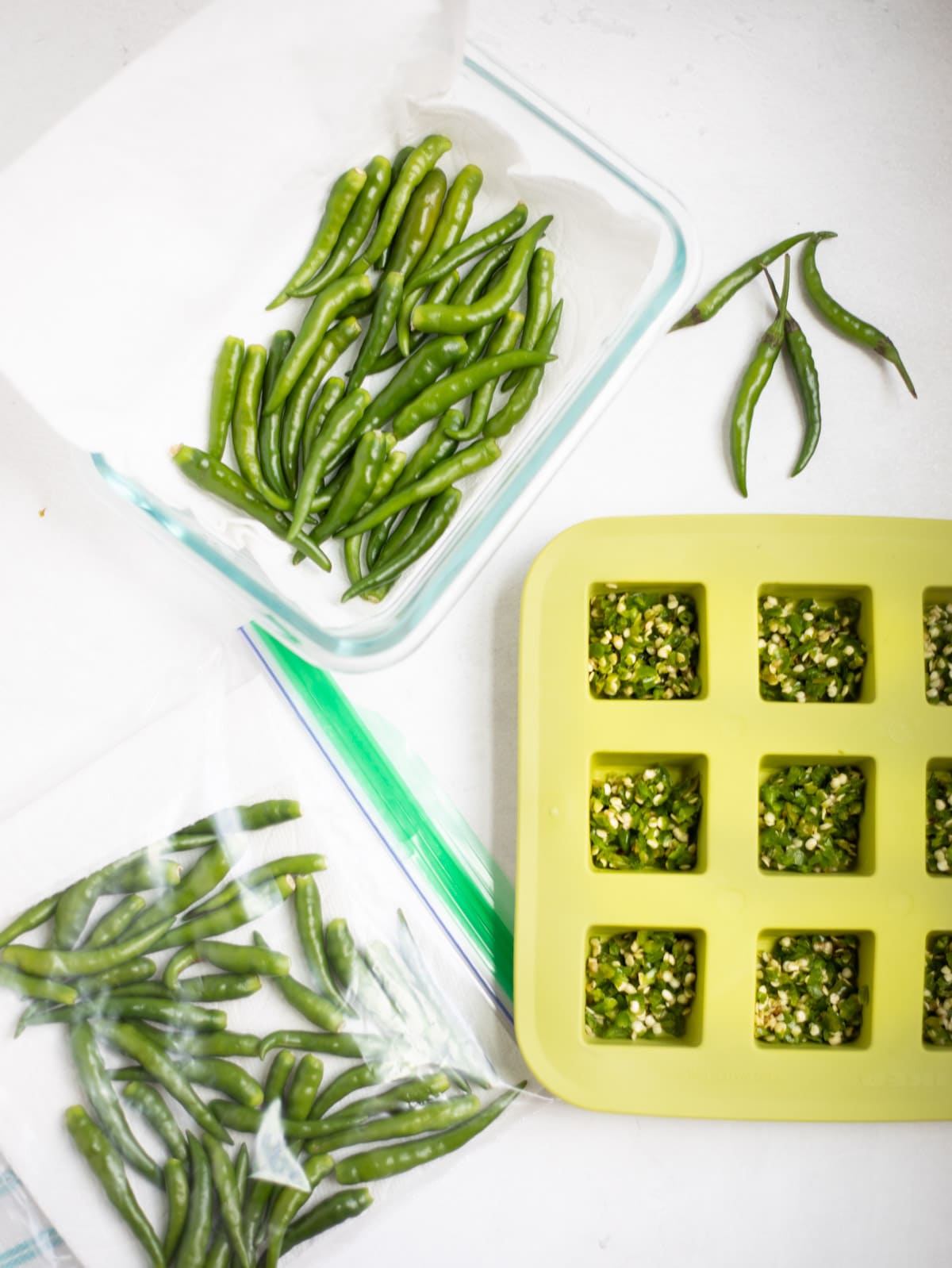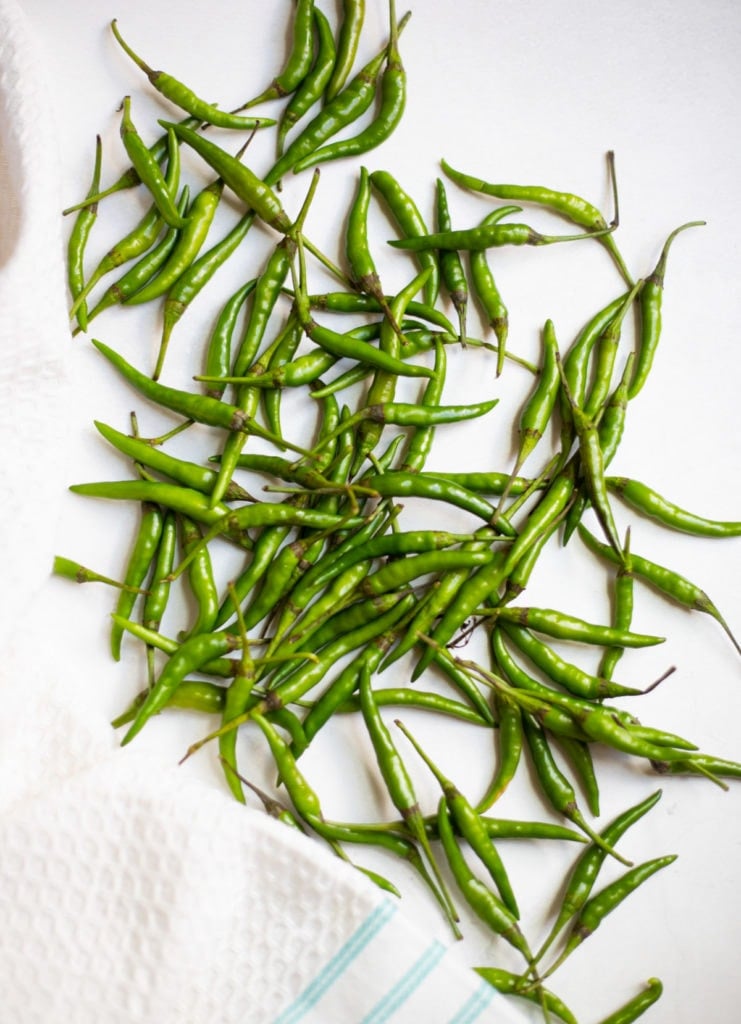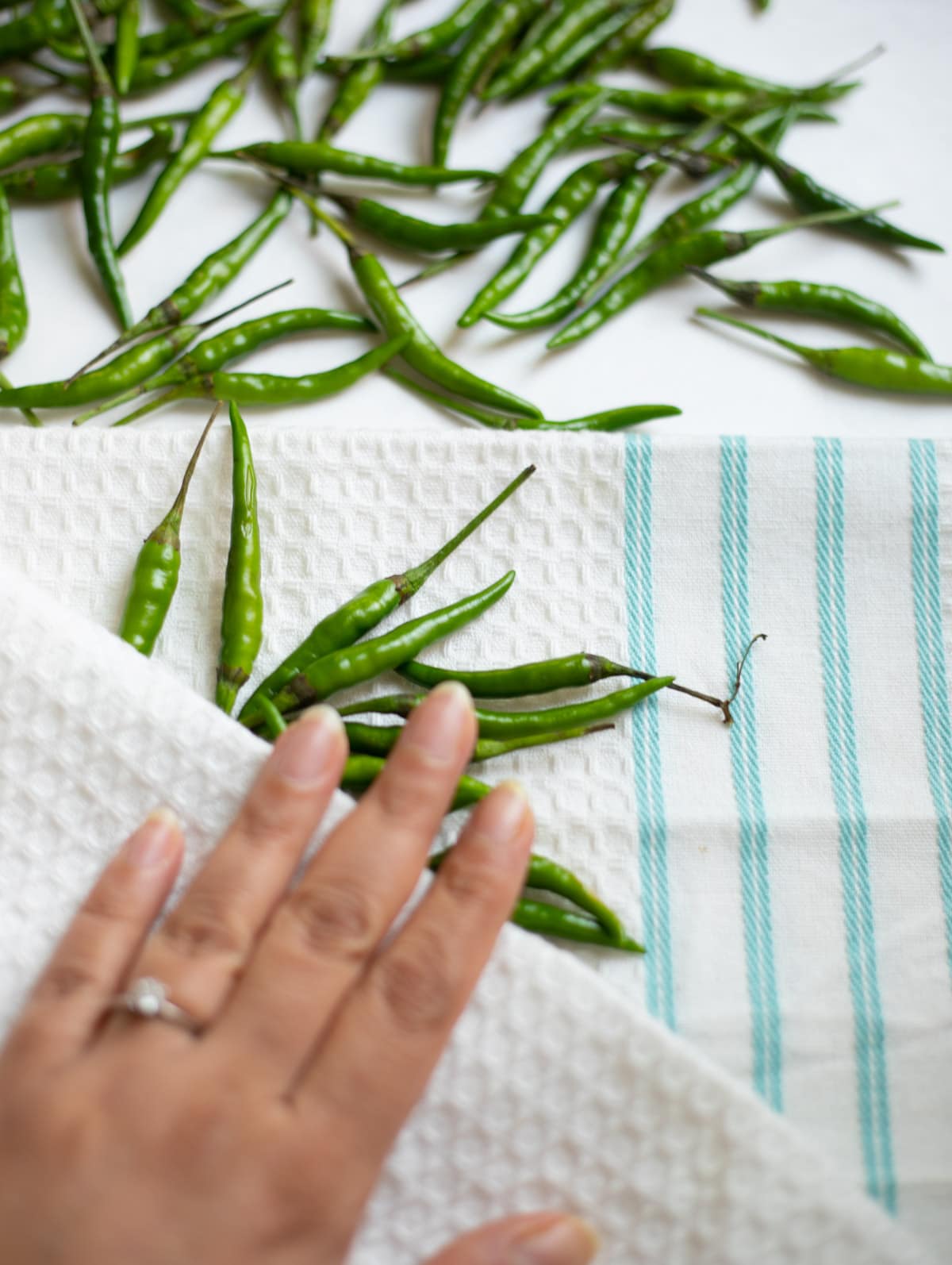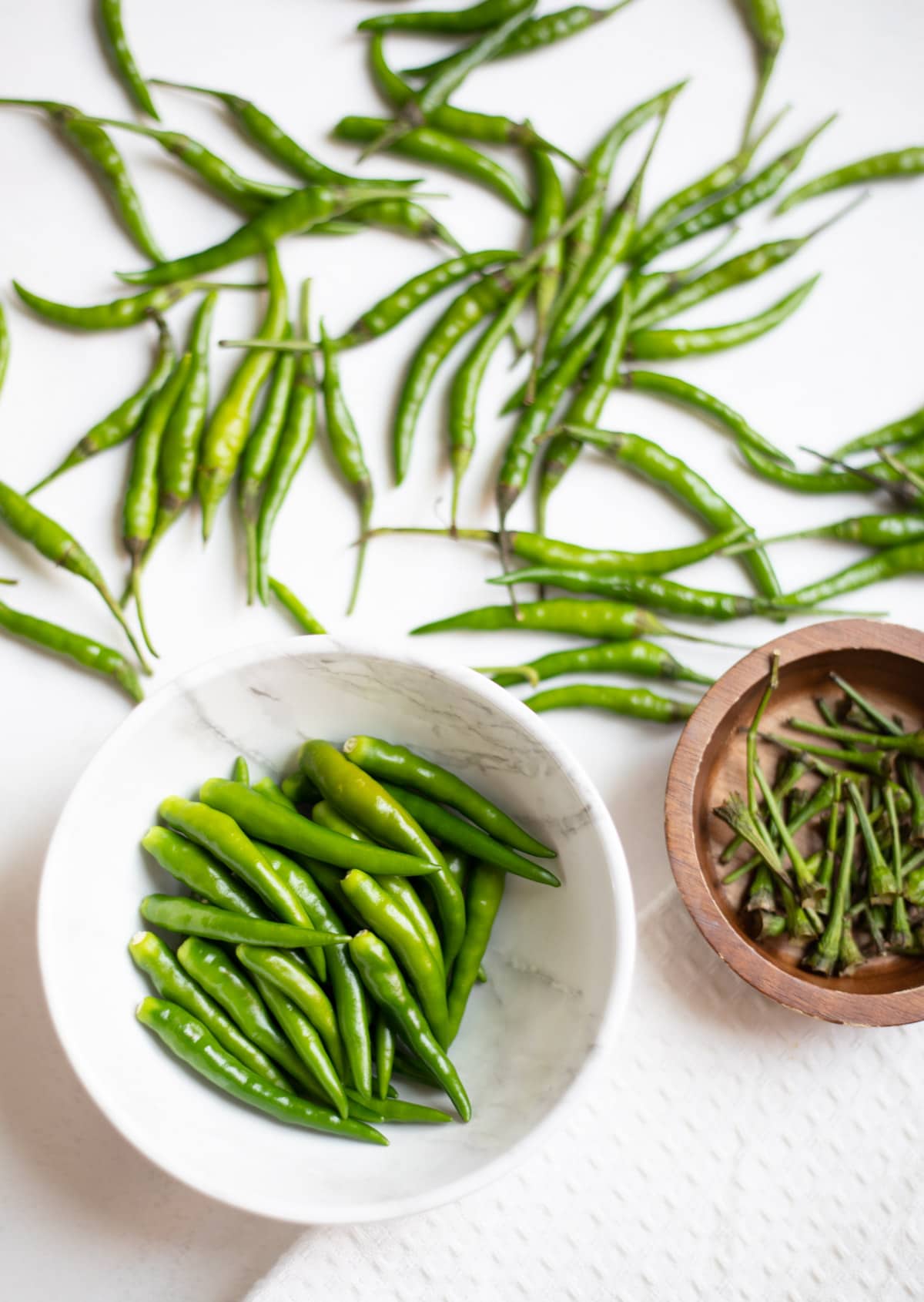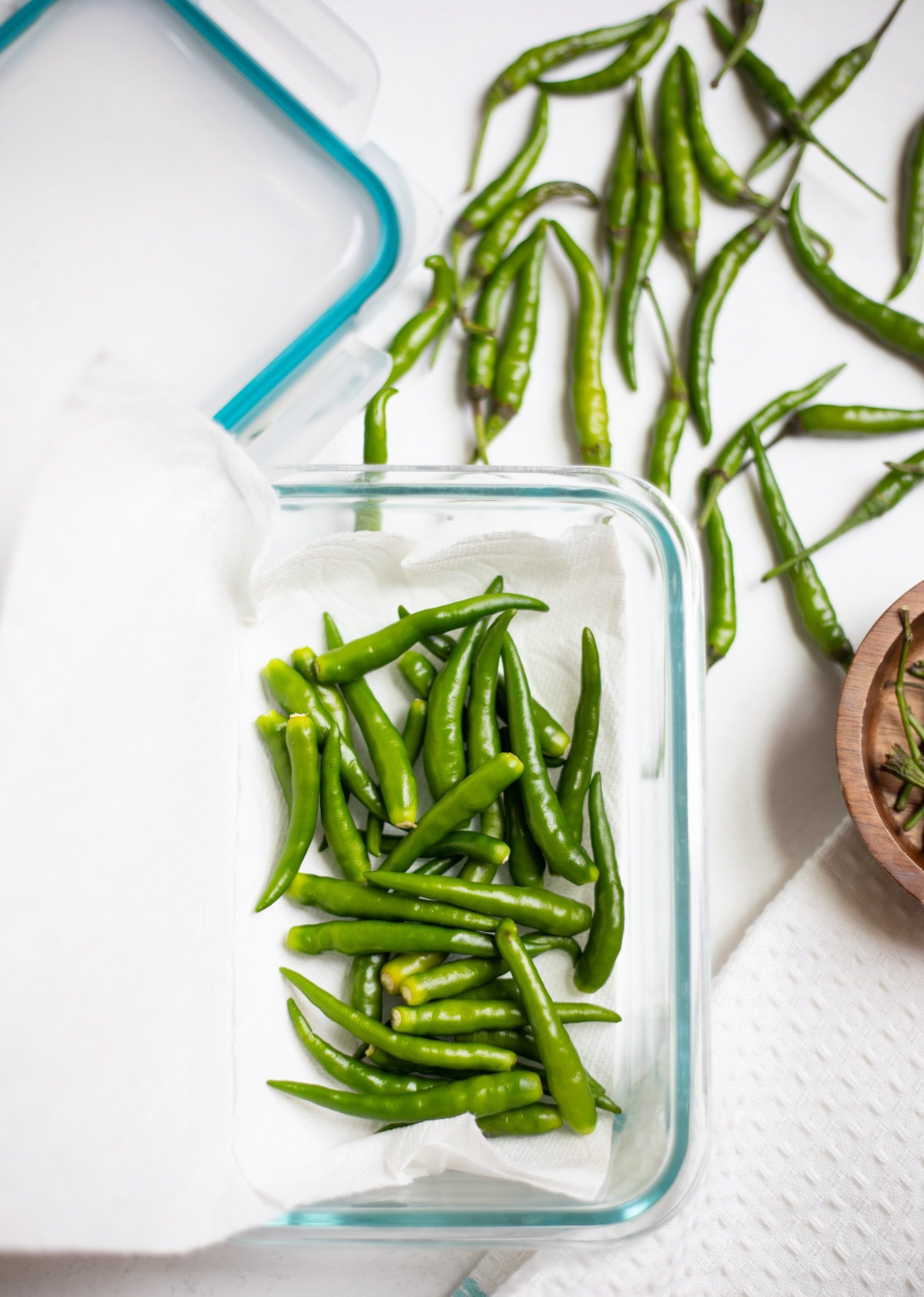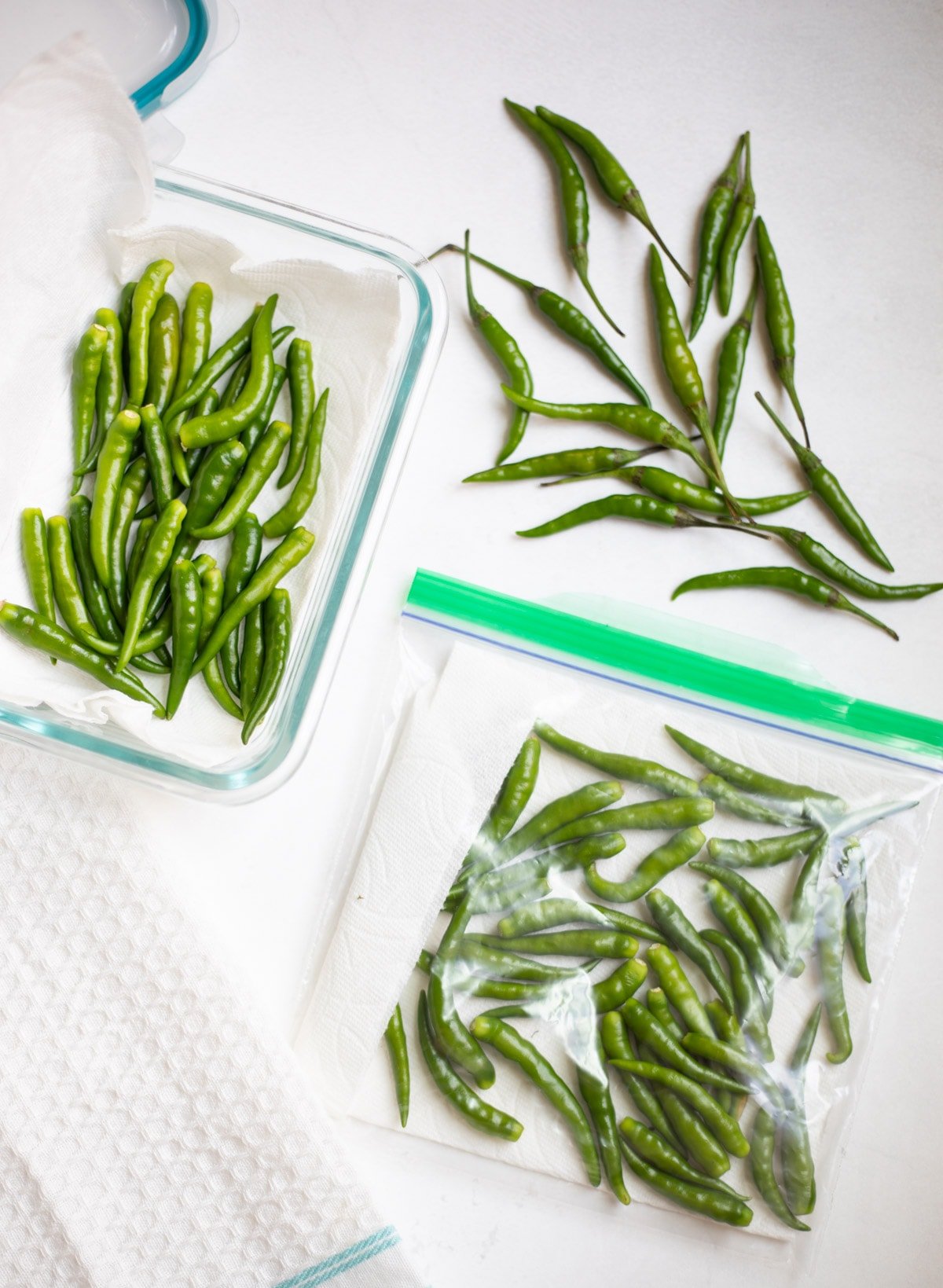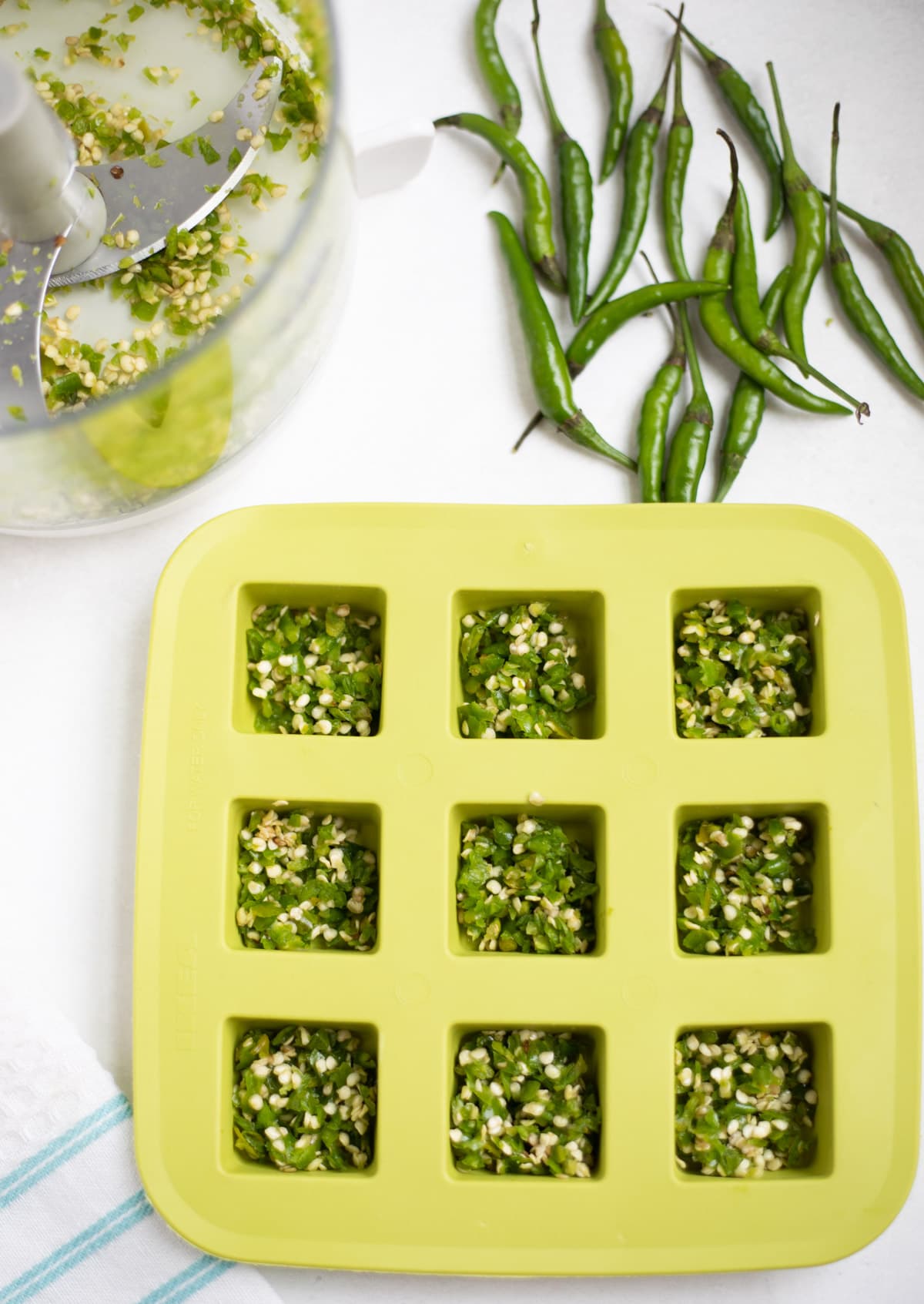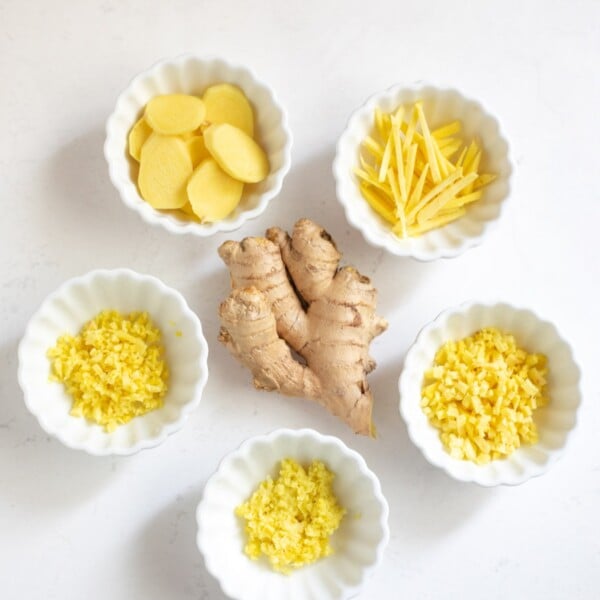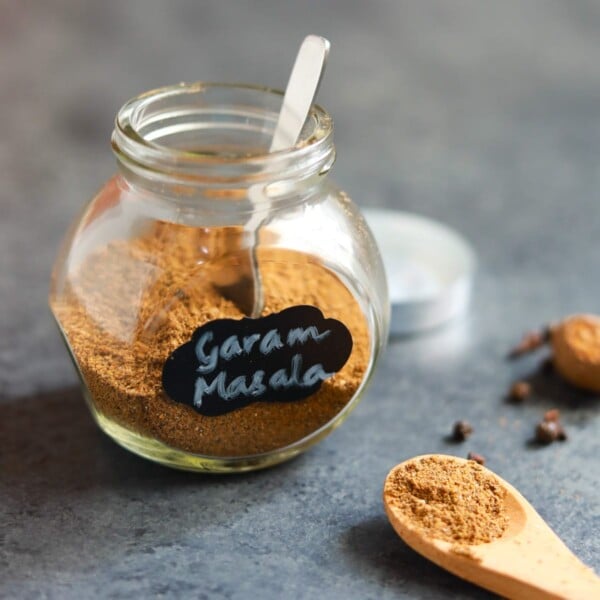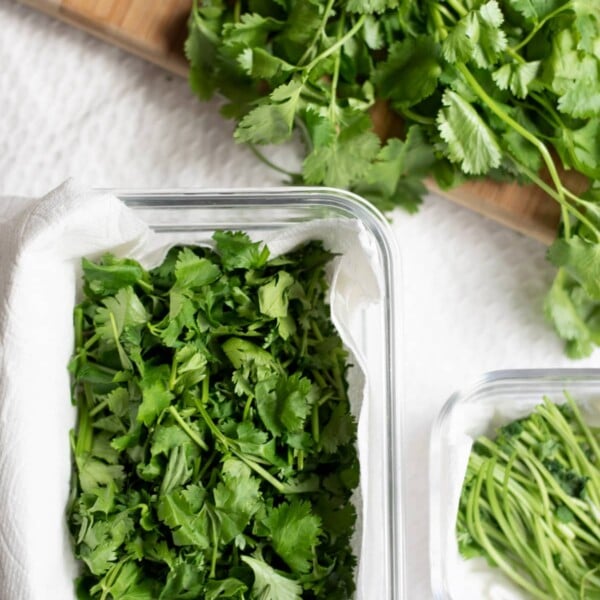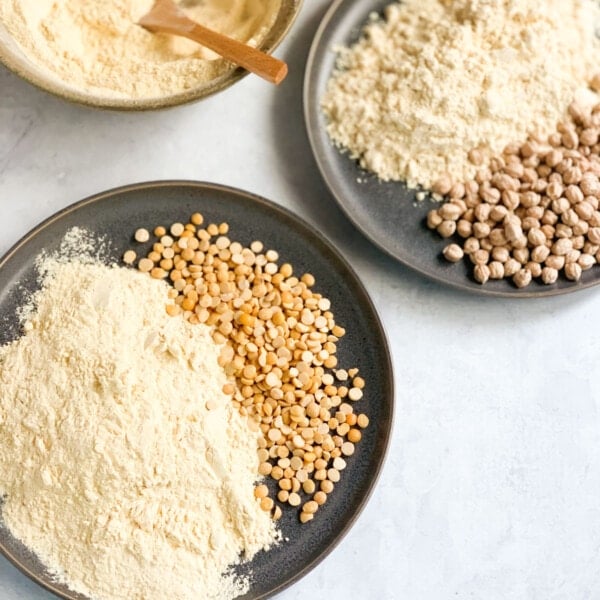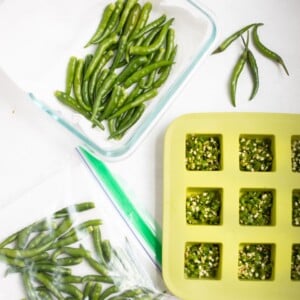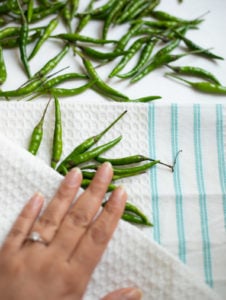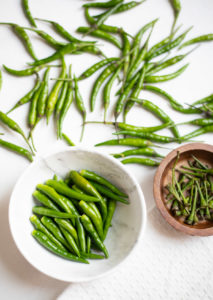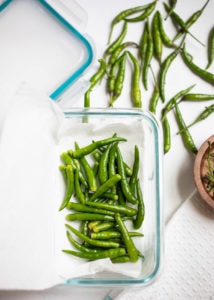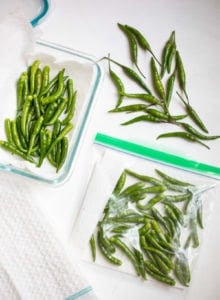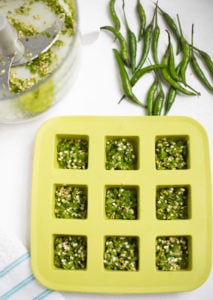If you have seen or used my recipes, you will know that I use green chili peppers in almost all of my Indian cooking. So, they are always in my refrigerator. One thing you might find interesting: Growing up in India, the vegetable vendor would typically not charge for green chili and cilantro and add a little to your bag when you purchase any vegetables. They were so prevalent and considered an inherent part of cooking. So now that we are trying not to visit grocery stores often (during the pandemic), I have been trying various ways to make my Indian groceries last longer, e.g. preserving curry leaves, which I shared last week. I know many of you may not have Asian grocery stores nearby, making it hard to get ethnic groceries often. Here, I will share all the ways you can store green chili peppers and use them in your cooking.
What are Green Chili Peppers?
Chili peppers are the fruits of the plant from the genus Capsicum. They are commonly used to add heat to a dish. Capsaicin is the ingredient in the chili peppers that gives them the intense heat. Chili peppers impart a spice kick and heat to the food. That said, they are also added to the food for their acidity, flavor, and sometimes color. Did you know Green Chili’s are always fresh and not dried? They change color to red as they ripen. They are dried to then make ground red chili powder. There is a wide variety of chili peppers around the world. Let’s discuss the one used most frequently in Indian cooking.
Indian Green Chili Peppers
Hari Mirch is the Hindi word for green chili, where “Hari = green” and “Mirch = chili.”
Fresh, slender Indian green chiles are used in curries, stews, pickled, or eaten raw as a condiment.
The white, spongy membrane of the green chili near the seeds, also called the placenta, carries that heat. It has the highest amount of capsaicin, which imparts the heat to the chili pepper. If you want to remove the spiciness of a chili, then slice away the membrane.
Green Chili Peppers are also great for tempering, similar to curry leaves (The cooking process of adding ground or whole spices to hot oil, along with aromatics and herbs)
Types of Green Chili
There is a large variety of green chilis in India and all over the world. In the South of India, Kanthari and Bydaki are used. In the east, Naga and Dhani are used. But in most parts of India, “Jwala” is the popular choice. It is moderately hot. It has around 25,000 – 100,000 Scoville Units. If you want to compare, cayenne is around 30,000 to 50,000 units, and jalapeños range from 5000 to 25,000. Small Thai chili and birds-eye chili peppers are around 50,000 to 100,000 units.
Substitute for Green Chili in Indian Cooking
Jwala chili is the most common Indian Green Chili Pepper. But it is not always easily available in U.S. stores. My substitution suggestions in order of preference are bird’s eye, Thai Chili, or Serrano pepper (use 1/2 serrano for 1 green chili). You can also use green Cayenne peppers, but I don’t usually find them in stores. Jalapeños are not the same as Indian green chilis, as you can imagine. You can use them in Indian cooking, but they are much less spicy than Indian green chilies.
Benefits of Green Chili
Green Chili is rich in vitamins A and C. They are also a good source of iron and potassium. Green chili’s are rich in antioxidants and their consumption increases metabolism. Capsaicin in green chillies has been shown to reduce body temperature. No wonder people in hot countries such as India love their spicy food with green chili’s.
How to use Green Chili Peppers?
Green chili peppers are mostly cooked, but some people enjoy them raw. I would not eat them raw, but pickled green chilis are my favorite.
In Indian cooking, they are typically tossed in hot oil to cook along with tempering ingredients.
To infuse the flavor of green chilis in your food without much heat, add a whole chili or cut a slit at the center of the chili pepper and then add it whole when cooking. Remove it after cooking.
To get the full flavor of the green chili peppers, chop the fresh chili pepper very fine or make a green chili paste to use in your cooking.
Everyone has a different spice preference. Most kids will not be able to appreciate the flavor or heat of green chilies. So, adjust your cooking based on your family’s palate.
We prefer chopped chili peppers typically, however now a days with little kids at home, I add them whole with a slit. This has worked well for my family. Also, sometimes, I temper my food with chopped or whole green chilies. We can garnish our food with this tempering, eg, the tempering in dhokla or on a lentil curry, to add an extra spice punch.
Be careful when chopping green chilies. They can leave a burning sensation in your fingers. Do not touch your face or eyes. Wash your hands after chopping or using them.
Where to buy?
We usually buy green chili peppers from our local Indian grocery stores. They usually carry Indian green chili, Thai chili, serrano, and jalapeno.
Choose the green chiles that are bright green in color, plump, and unbruised.
How to preserve Green Chili’s?
To preserve green chili’s, you can either refrigerate them or freeze them. You can also make a green chili paste and freeze it in small portions.
Either way, the first step is to wash, dry, and de-stem them. You can also remove the stem first and then wash it.
If there are any chili that are slightly bruised or changing color to red, add them to the refrigerator stash and use them sooner.
Wash & Dry Completely
Wash the green chilies under running water. If you are washing a large batch, you can wash them in a colander.
Then, dry them completely by air drying or using a kitchen towel.
Remove the Stem
Store in the Refrigerator
Line a paper towel in a glass or plastic container. Place the green chilis in the container and wrap them in the paper towel. The paper towel soaks up moisture, keeping the chilis fresh for longer. Whenever you use the green chili from the container, remove any that are getting spoilt. As they ripen, some might change color to red.
In the Freezer
The best way to store green chilies for months is to freeze them. You can either freeze them whole or make green chili paste and freeze the paste. To freeze whole chilies, place a paper towel in a Ziploc and then the green chilies in a single layer. This way, they don’t stick to each other and are easier to remove. Remove as much air as possible and seal. You may also first freeze them on a sheet pan and then put them in the ziplock bag.
Green Chili Paste
You can also chop the green chili or make a paste, then freeze them. Make a paste using a blender or food processor. I prefer not to add water when blending. As you can see below, I prefer to make a coarse paste, similar to diced chili. It is best to store the paste in ice-cube trays in the portion size you use in your cooking. This way, it is easy to remove them while using them. If you don’t have ice-cube trays, you can store the paste in a ziplock bag. Remember to make a thin layer so you can easily break them when you need them.
Do I need to thaw green chili before using it?
If you are using frozen chilis in cooking, it is not necessary to thaw them. I use them when adding to curries or dals that are to be cooked. You can either thaw the green chilies in the fridge or on the countertop or even run them under cold water.
Recipes where I use Green Chili Peppers
I use green chili peppers in most of my Indian cooking. Depending on the dish’s quantity, I typically add 1-2 peppers.
Red Lentil Curry Potato Curry Ginger Chili Pickle Bhurji (Indian Scrambled Eggs) Aloo Matar Rava Dhokla Vegetable Pulao Mint Cilantro Chutney
How to Peel and Cut Ginger the Right Way?
Garam Masala Recipe (Easy & Authentic)
How to Store Cilantro + Buy, Cut, & Use?
How to Make Chickpea Flour | Gram Flour | Besan


